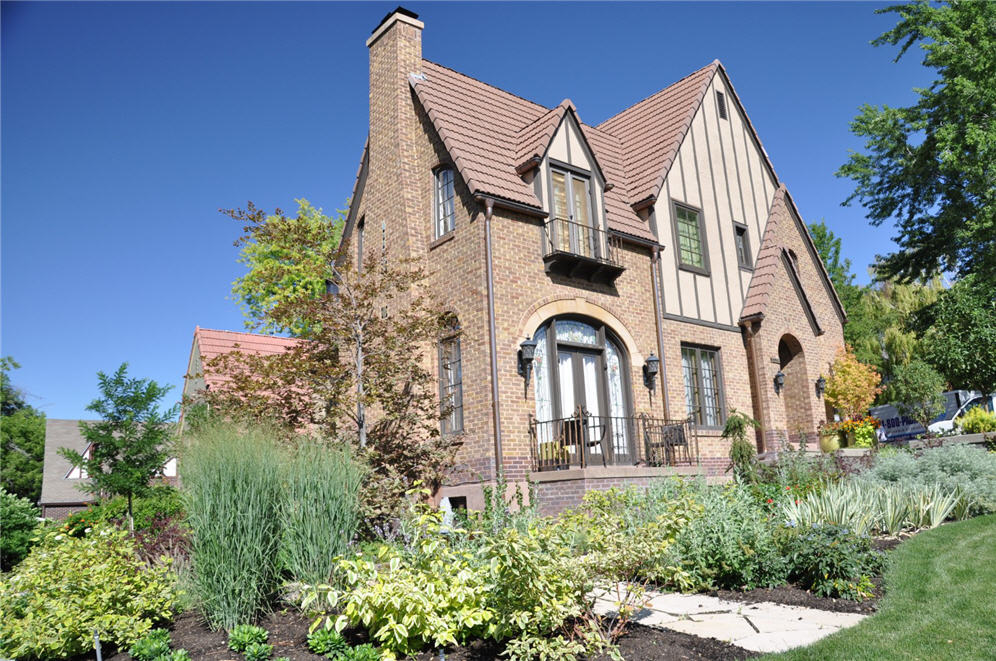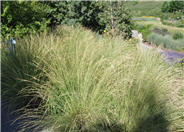
Common name:Switch Grass
Botanical name:Panicum virgatum
Switch grass is a north American native and an original component of the Midwestern Plains. It is a warm-season (it goes dormant during the winter) clumping grass with an upright form, interesting flowers, showy fall color, and a great winter presence. It grows from 4 to 7 feet tall and about half as wide, though in time may spread wider. Airy, delicate flowers appear in mid-summer, hanging along an arching, wiry stem, and are pink to red to orange. Foliage turns yellow to orange in the fall, and the flowers turn a silvery white. there are now many cultivars to choice from, and they all make excellent and low-care additions to perennial or shrub borders, or in more naturally styled settings.
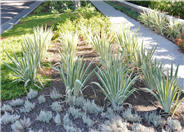
Common name:Variegated Iris
Botanical name:Iris pallida 'Variegata'
If I had to pick my top five must-have perennials, this would be on the list. A species of bearded iris, yellow variegated iris has long, sword like foliage that emerges in early spring and is colored pale, grey-green and lemony yellow. Flowers bloom late spring to early summer, are a pale blue to violet-blue, and are very fragrant (like a cross between grape and apple juice). Absolutely fills the yard. And after flowering, the foliage holds out all summer, unlike other bearded iris; the variegated leaves a striking presence, even without the flowers. The foliage is about 18 to 24 inches tall, and the flowers rise to about 30 to 40 inches. I have never had a garden that didn't include this iris. There is also a variety with white variegation, usually listed as Iris p. 'Argenta.' Fabulous anywhere, and plant enough so you can cut them and bring them indoors.
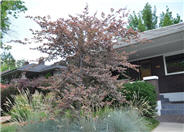
Common name:Tricolor Beech
Botanical name:Fagus sylvatica 'Roseo-marginata'
This beech has purple leaves with irregular rose and pinkish-white margins. Slowly grows 30 to 40 feet tall and wide. The leaves look best when provided with afternoon shade, as our hot dry summers may scorch the white margins.
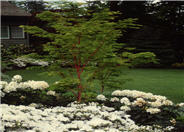
Common name:Coral Bark Maple
Botanical name:Acer palmatum 'Sango-kaku'
This Japanese maple is known more for its brilliantly colored bark than its foliage. The bark on new wood is bright coral red, aging to a lovely reddish-brown color. foliage emergesbright green with red margins; fall color is golden yellow. Upright and open habit; growns to about 15 to 20 feet tall and nearly as wide, though it will do so very slowly.
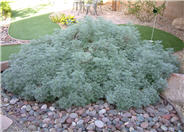
Common name:Powis Castle Artemisia
Botanical name:Artemisia 'Powis Castle'
With its finely dissected, silvery foliage, Powis Castle Artemisia is a wonderful foil for other plants with colored foliage or brightly colored flowers. Its silvery foliage is attractive over a long season, helping to bridge those gaps in the perennial border between lulls in flowering. Stems are useful in flower arrangements, and it is undisturbed by deer and rabbits. It may grow 2 to 3 feet tall and wide. I admit to liking this cultivar so much more than Silver Mound.
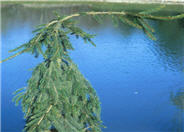
Common name:Weeping Norway Spruce
Botanical name:Picea abies 'Pendula'
Weeping Norway spruce is an artful accent evergreen with weeping, spreading branches. Spring growth is a bright green, with summer needles a rich green. Typically it is grown on a stake to feature its pendulous habit; it's height depends on where it is staked, but generally from 3 to 10 feet tall and up to 10 feet wide. It can also be grown as an undulating groundcover, draping over walls and slopes.
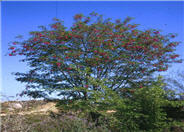
Common name:Purple Robe Locust
Botanical name:Robinia pseudoacacia 'Purple Robe'
Purple Robe Locust is a medium-sized upright tree, growing 40 feet in height with a compact, rounded form. The trunk is long and straight with an interesting branching pattern. Leaves are dull, dark blue-green and pinnately compounded. Fall color is yellow. Flowers are dark rose-pink, in dense clusters, May to June. Lonf, slender pods follow flowers and persist into autumn. Bark is warm gray and furrowed; branches have spines.
| Designer: Ward and Child | Grand Estate 4 |
Photographer: GardenSoft |
Water Saving Tip:
Group plants in your garden according to their water needs (hydrozone).
